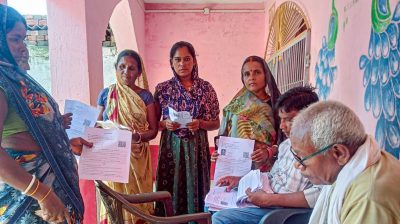Lost in cricket smog: Kanpur is India’s Polluted City No. 1
If you thought the smog over Kanpur merely contributed to one of the most boring cricket matches in recent times, it’s time to wake up....

If you thought the smog over Kanpur merely contributed to one of the most boring cricket matches in recent times, it’s time to wake up.
The deathly grey cover that forced umpires to call off the India-South Africa Test earlier than scheduled yesterday signalled something much worse: it confirmed Kanpur’s status as India’s most polluted city this year, in terms of having the highest Respirable Suspended Particulate Matter (RSPM).
Consider the following:
• Suspended Particulate Matter (SPM) and RSPM levels found to be five times more than permissible limits, clocking all-time high of 674 mg per cubic metre and 302 mg per cubic metre, respectively, this August (see chart for November figures). The permissible levels for SPM is 140 and RSPM 60 mg per cubic metre.
• Air quality 5-6 times worse than normal limits in residential areas
• 296 slums in the city with a 5 lakh population and no civic services
• 5 lakh vehicles on roads, with almost 50,000 added every year
• 60% of municipal area with no sewerage system
• 1400 metric tonnes of garbage disposed each day without adequate collection infrastructure
• City masterplan expired in 1991, new one yet to be made
In short, it is dangerous to even take a deep breath in the city, especially during winter.
‘‘Given the figures of the past five years, the pollution figures are headed upwards every coming year,’’ says S R Sachan, Regional Officer, UP Pollution Control Board (UPPCB).
The answer, experts say, lies in curbing the growing number of vehicles, improving traffic management and planting more trees to hold the dust.
‘‘There are nearly five lakh vehicles running on Kanpur city roads now. And almost 50,000 vehicles are getting added each year,’’ says P K Gupta, Regional Transport Officer, Kanpur.
Besides, the city has a metre gauge rail line running through its heart: at the level crossings, pollution levels often rise 6-8 times above normal because of idling vehicles and congestion.
There is also a highway that cuts through Kanpur and two wholesale markets within city limits.
‘‘The poor quality of roads, traffic congestion and zero greenery allow rising dust to get mixed with vehicle emission. The emission from generators due to the bleak power situation in Kanpur doesn’t help either,’’ says Dr Shobha Chaturvedi, Scientific Officer, UPPCB.
The Environment Management Plan submitted to the Supreme Court has deadlines attached, but work on that is yet to get started.
All that’s been done so far: one-way traffic on the busy Mall road, two new parking lots, a beautified lake, more road dividers and a bus terminus removed.
Photos



- 01
- 02
- 03
- 04
- 05



























